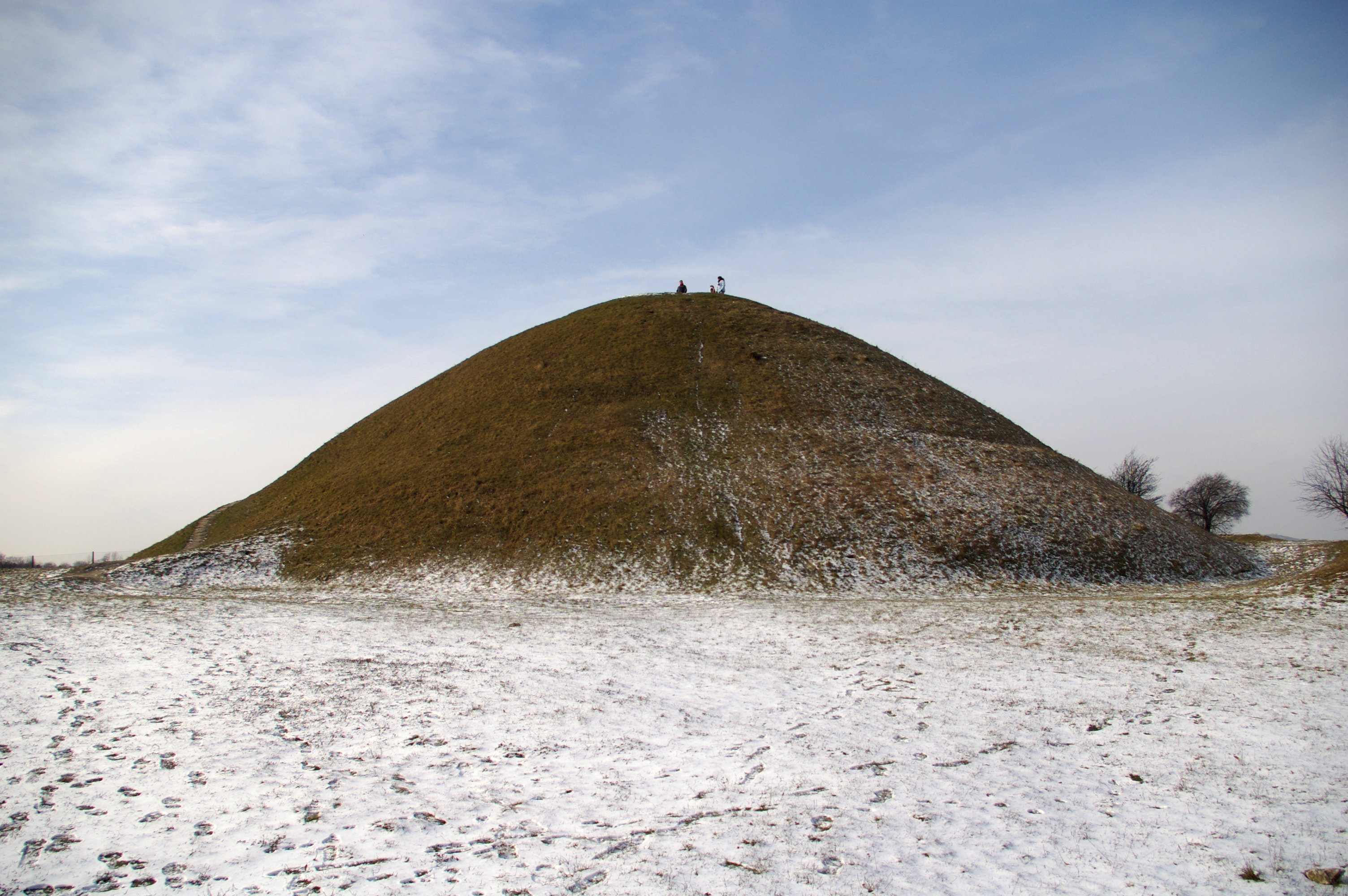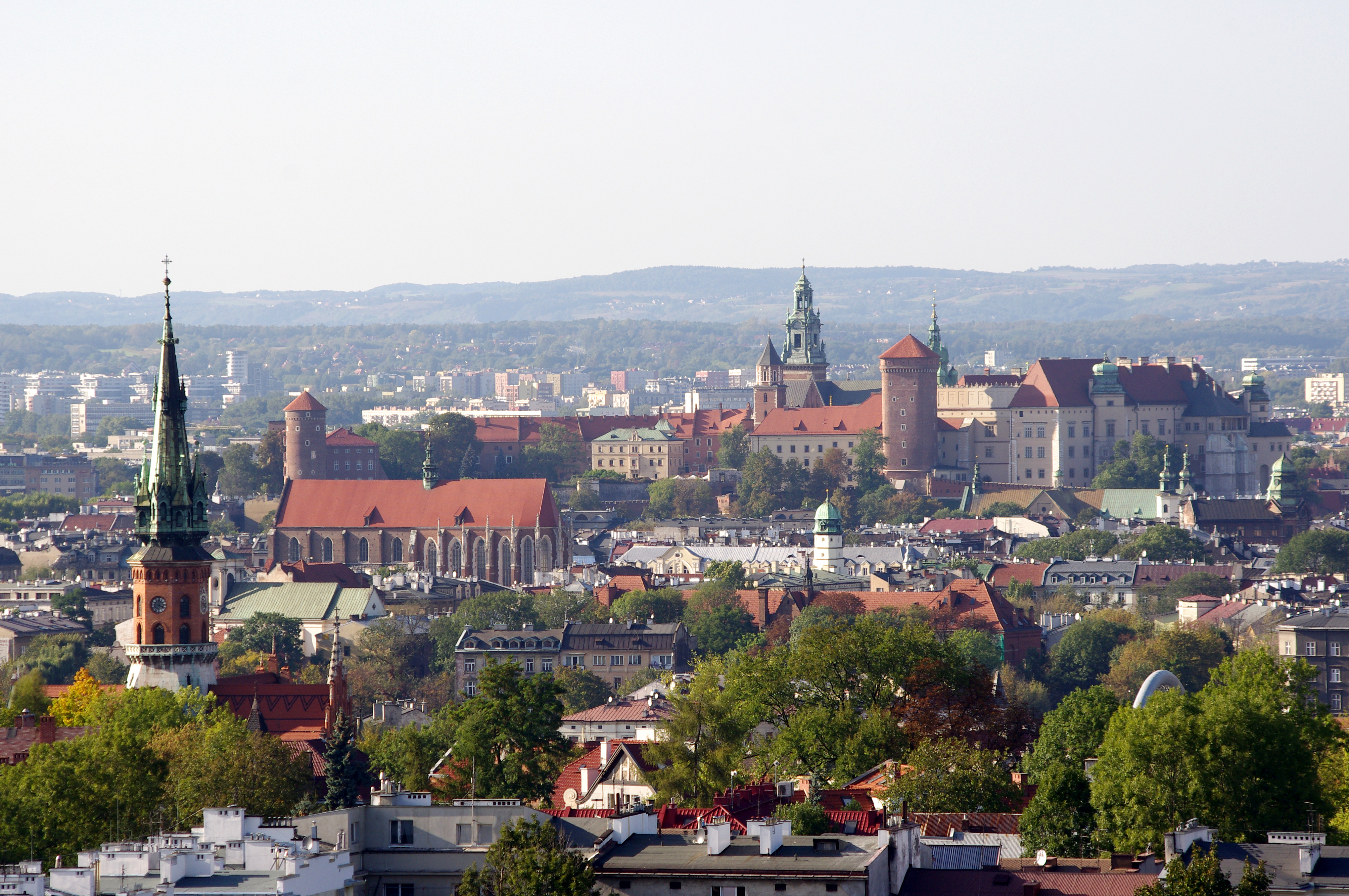Krakus Mound on:
[Wikipedia]
[Google]
[Amazon]
 Krakus Mound ( pl, kopiec Krakusa), also called the Krak Mound, is a
Krakus Mound ( pl, kopiec Krakusa), also called the Krak Mound, is a Kopce w Krakowie
at e-Krakow.com ''(in Polish)'' These four make up Kraków's four memorial mounds.
/ref>
at Sacred Destinations, 2009 Mythical origins are also connected to the mound. Krakus is said to have been constructed to honour the death of King Krakus when mourning townspeople filled their sleeves with sand and dirt and brought it to the site of the Krakus Mound to create a mountain that would rule over the rest of the landscape, as King Krakus had. Originally, four smaller mounds ringed the Krakus Mound, but they were demolished in the 19th century to create Kraków's city wall.Poland, Kraków sightseeing: Podgorze. Places of Interest: Krakus Mound
at In Your Pocket.com. Similar to other ancient structures, such as
Similar to other ancient structures, such as 
 Krakus Mound ( pl, kopiec Krakusa), also called the Krak Mound, is a
Krakus Mound ( pl, kopiec Krakusa), also called the Krak Mound, is a tumulus
A tumulus (plural tumuli) is a mound of earth and stones raised over a grave or graves. Tumuli are also known as barrows, burial mounds or '' kurgans'', and may be found throughout much of the world. A cairn, which is a mound of stones ...
located in the Podgórze district
A district is a type of administrative division that, in some countries, is managed by the local government. Across the world, areas known as "districts" vary greatly in size, spanning regions or counties, several municipalities, subdivision ...
of Kraków
Kraków (), or Cracow, is the second-largest and one of the oldest cities in Poland. Situated on the Vistula, Vistula River in Lesser Poland Voivodeship, the city dates back to the seventh century. Kraków was the official capital of Poland un ...
, Poland
Poland, officially the Republic of Poland, is a country in Central Europe. It is divided into 16 administrative provinces called voivodeships, covering an area of . Poland has a population of over 38 million and is the fifth-most populou ...
; thought to be the resting place of Kraków's mythical founder, the legendary King Krakus
Krakus, Krak or Grakch was a legendary Polish prince, king and founder of Kraków, the ruler of the Lechitic tribe of Vistulans. Krakus is also credited with building Wawel Castle and slaying the Wawel Dragon by feeding it a dead sheep full ...
. It is located on Lasota Hill, approximately south of Kraków's city centre, at an altitude of , with a base diameter of and a height of . Together with nearby Wanda Mound, it is one of Kraków's two prehistoric mounds as well as the oldest man-made structure in Kraków. Nearby are also two other non-prehistoric, man-made mounds, Kościuszko Mound, constructed in 1823, and Piłsudski's Mound, completed in 1937.at e-Krakow.com ''(in Polish)'' These four make up Kraków's four memorial mounds.

History
The age and the original purpose of the mound remain a mystery, although religious and memorial purposes have been ascribed to the mounds./ref>
Excavations
In archaeology, excavation is the exposure, processing and recording of archaeological remains. An excavation site or "dig" is the area being studied. These locations range from one to several areas at a time during a project and can be condu ...
conducted in mid-1930s revealed that the mound consists of a solid wooden core covered with soil and turf
Sod, also known as turf, is the upper layer of soil with the grass growing on it that is often harvested into rolls.
In Australian and British English, sod is more commonly known as ''turf'', and the word "sod" is limited mainly to agricult ...
. Some artifacts dating from between the 8th and 10th centuries were found inside, but no human remains or bones were discovered. According to another hypothesis the mound is of Celtic
Celtic, Celtics or Keltic may refer to:
Language and ethnicity
*pertaining to Celts, a collection of Indo-European peoples in Europe and Anatolia
**Celts (modern)
*Celtic languages
**Proto-Celtic language
*Celtic music
*Celtic nations
Sports Foo ...
origin and dates from the 2nd-1st century BCE.Kraków Mounds: Krakus & Wanda; Kraków, Polandat Sacred Destinations, 2009 Mythical origins are also connected to the mound. Krakus is said to have been constructed to honour the death of King Krakus when mourning townspeople filled their sleeves with sand and dirt and brought it to the site of the Krakus Mound to create a mountain that would rule over the rest of the landscape, as King Krakus had. Originally, four smaller mounds ringed the Krakus Mound, but they were demolished in the 19th century to create Kraków's city wall.Poland, Kraków sightseeing: Podgorze. Places of Interest: Krakus Mound
at In Your Pocket.com.
 Similar to other ancient structures, such as
Similar to other ancient structures, such as Stonehenge
Stonehenge is a prehistoric monument on Salisbury Plain in Wiltshire, England, west of Amesbury. It consists of an outer ring of vertical sarsen standing stones, each around high, wide, and weighing around 25 tons, topped by connec ...
, the Krakus Mound may have been constructed with astronomy in mind. If one stands on the Krakus Mound and looks towards Wanda Mound at sunrise on the morning of Beltane
Beltane () is the Gaelic May Day festival. Commonly observed on the first of May, the festival falls midway between the spring equinox and summer solstice in the northern hemisphere. The festival name is synonymous with the month marking the ...
, the second-largest Celtic feast day, one will see the sun rise directly over Wanda Mound.
Until the mid-1830s, a folk festival
A festival is an event ordinarily celebrated by a community and centering on some characteristic aspect or aspects of that community and its religion or cultures. It is often marked as a local or national holiday, mela, or eid. A festival c ...
was held annually on the first Tuesday after Easter
Easter,Traditional names for the feast in English are "Easter Day", as in the '' Book of Common Prayer''; "Easter Sunday", used by James Ussher''The Whole Works of the Most Rev. James Ussher, Volume 4'') and Samuel Pepys''The Diary of Samue ...
on the slopes of the Krakus Mound. It's been revived in the 2000s and is being held annually again.

See also
* Wanda Mound, legendary grave of Krakus' daughter * Kościuszko Mound, in Kraków * Piłsudski Mound, in KrakówReferences
{{Authority control Monuments and memorials in Kraków Landmarks in Poland Commemorative mounds